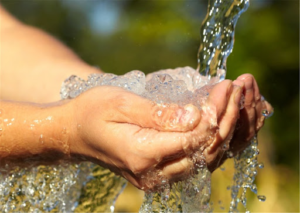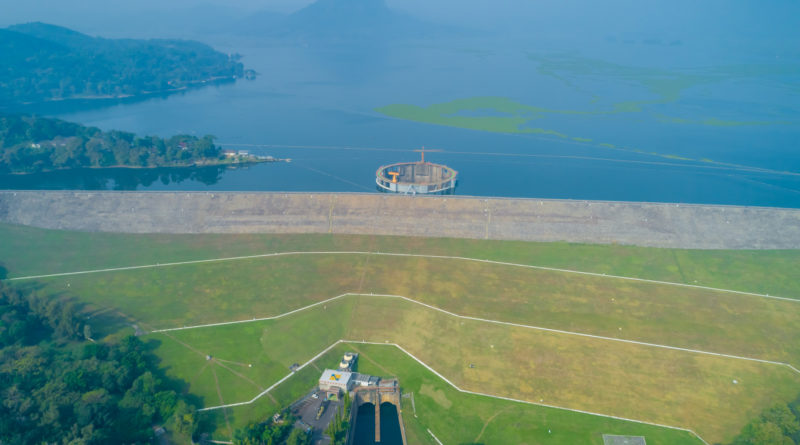SCI-TECH | SOCIETY | Indonesian, Philippine water experts push for more sustainable dams amid climate change
The Jatiluhur Dam in West Java is seen in this undated photo. (Shutterstock/Akhmad Dody Firmansyah)
.

Experts warn that dams in both Indonesia and the Philippines, crucial for irrigation, drinking water and electricity generation, may face increased strain as climate change brings unpredictable and high-precipitation weather patterns.
Budi Santoso Wignyosukarto, a hydraulic engineering expert at Yogyakarta-based Gadjah Mada University, said that Indonesia had been accustomed to heavy rain, however, climate change would cause the weather to become less predictable, which would also affect dams.
Budi emphasized the need for Indonesia to be prepared for these uncertainties, as the country is already facing challenges such as rapid population growth that lead to land use changes, as more people need more food, shelter and industry, which all affect the climate.
He said that Indonesia needed to be more flexible and adaptable to climate change by improving its resilience.
“Building this resilience can be done through building infrastructure that can absorb [extreme] rainfall well, such as reservoirs coupled with dams whose capacities have been optimized,” Budi said.
Evi Anggraheni, a lecturer in water resource management at the University of Indonesia’s Civil Engineering Department, agreed that climate change would lead to unstable weather that affected dams, particularly through erosion in upstream areas caused by extreme rainfall.
This erosion leads to sedimentation in the reservoirs of dams. “Conservation [of the environment] at the upstream of dams is needed to improve their performance,” Evi said.
Airlangga Mardjono, the director of dams and lakes at the Public Works and Housing Ministry, said that all dams in Indonesia would be able to withstand the effects of climate change, as they have been designed with their probable maximum flood (PMF) capacity in mind to ensure they can contain large amounts of water.
“Dams are built that way because of the high risk [from holding large amounts of water], so we use the most conservative calculations,” Mardjono said.
There were 228 dams operating in Indonesia as of 2022, an increase from the previous year’s 205 dams.
Mardjono also said the ministry had adjusted operation patterns of dams to withstand high rainfall by making sure to release excess water from dams’ reservoirs ahead of the rainy season, as well as installing early release floodgates and automating weather monitoring at dams.
One of the best options The Philippines is also home to dams mainly used for irrigation and energy generation.
The Philippines Biodiversity Management Bureau recorded 39 water storage areas or dams in the country.
Nine of these are major dams that are closely monitored by the Philippine Atmospheric, Geophysical and Astronomical Services Administration (PAGASA), the country’s meteorological agency, particularly during typhoons.
Additional dams are expected to become operational soon as a result of the administration of then-president Rodrigo Duterte’s massive infrastructure program, also known as the “Build, Build, Build” project.
According to the Ibon Foundation, a non-profit development organization, the program introduced eight dam projects from Abra in Northern Luzon to Iloilo in the Visayas.
Many of these projects are funded by official development assistance from China.
While supporters of dam construction argue that the facilities will address water and energy issues in the Philippines, critics assert that dams have negative impacts on the environment and indigenous communities near the sites, and are vulnerable to typhoons made worse by climate change.
Franz Kevin Geronimo, a Philippine consultant for the World Water Council, said that the intensifying rainfall in the Philippines due to climate change would mean that dam operators needed to release water more frequently or they would break.
“If the dam breaks, there will definitely be a bigger amount of water that will be released,” Geronimo said, adding that the changing rainfall patterns would produce heavy rain in a short span of time.
While dams could provide water and clean energy for the Philippines, Geronimo said that there were other options aside from dams to address these issues.
Geronimo said solar panels or hydrogen fuel were alternatives for providing energy.
However, the latter, while feasible, is not yet available in the country due to high cost and safety fears.
To address water issues, Geronimo suggested that the country consider harvesting rainwater.
The Philippines already has a Rainwater Collector and Springs Development Act, which requires the public works department to construct rainwater collectors to prevent flooding.
Geronimo also mentioned the options of recycling waste water and utilizing groundwater, however they might not be able to provide the amount of water dams do.
“We are talking about big supplies of both water and energy. I think [dams are] still one of the best options at the moment.” — Freelance journalist Siegfred Lacerna from the Philippines collaborated for this article, which is supported by Climate Tracker and Internews’ Earth Journalism Network through the Climate and Water Nexus Media Fellowship program.
.
A. Muh. Ibnu Aqil
The Jakarta Post
Jakarta
● Sat, January 28, 2023
.


 Memento Maxima Digital Marketing
Memento Maxima Digital Marketing Ads by: Memento Maxima Digital Marketing
Ads by: Memento Maxima Digital Marketing






